First National Pictures was an American film production and distribution company. It was founded in 1917 as First National Exhibitors' Circuit, Inc., an association of independent theatre owners in the United States, and became the country's largest theatre chain. Expanding from exhibiting films to distributing them, the company reincorporated in 1919 as Associated First National Theatres, Inc., and Associated First National Pictures, Inc. Approaching stars' and directors' production companies as a direct buyer, First National eventually signed Charlie Chaplin, Jackie Coogan, Mary Pickford, Norma and Constance Talmadge. In 1924 it expanded to become a film production company as First National Pictures, Inc., and became an important studio in the film industry. Among the major players the studio had under contract by then were Richard Barthelmess, Barbara La Marr, Harry Langdon, Colleen Moore, and Alla Nazimova. In September 1928, control of First National passed to Warner Bros., into which it was completely absorbed in November 1929.

American postcard by Western Air Express, no. 888. Caption: 'Where Motion Pictures Are Made' An overview of the First National Pictures studio complex in the mid-/late 1920s.
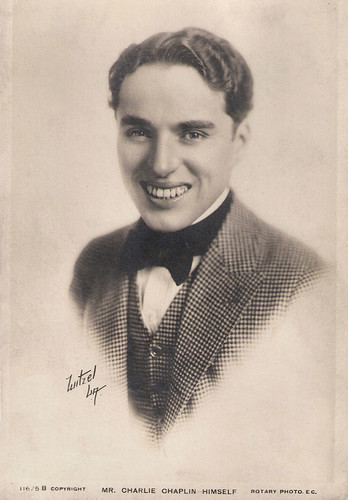
Charlie Chaplin. British postcard by Rotary Photo, no. 11575B. Photo: Albert Witzel.
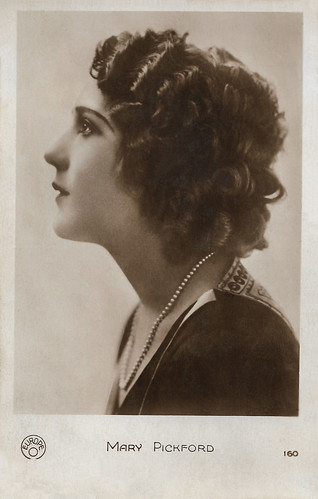
Mary Pickford. French postcard by Europe, no. 160.

Jackie Coogan. German postcard by Ross Verlag, no. 701/2, 1925-1926. Photo: Transocean-Film-Company, Berlin.
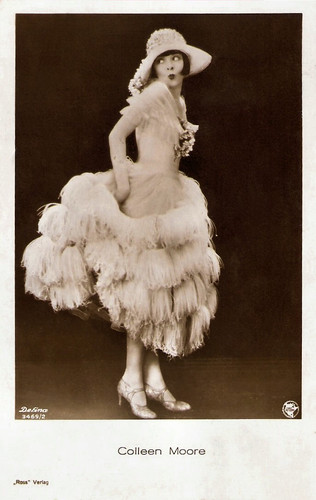
Colleen Moore. German postcard by Ross Verlag, no. 3469/2, 1928-1929. Photo: DeFina / First National Pictures.
The First National Exhibitors' Circuit was founded in 1917 by the merger of 26 of the biggest first-run cinema chains in the United States. It eventually controlled over 600 cinemas, more than 200 of them first-run houses as opposed to the less lucrative second-run or neighbourhood theatres to which films moved when their initial box office receipts dwindled.
First National was the brainchild of Thomas L. Tally, who was reacting to the many problems exhibitors had experienced with established distributors, such as the high cost of rentals, block-booking, and the inferior quality of some prints. The exhibitors also wanted to bypass distributors such as Adolph Zukor's Paramount, which had begun to try to control all aspects of the film industry.
In 1912, Tally thought that a conglomerate of theatres throughout the nation could buy or produce and distribute its own films. In 1917 Tally and J. D. Williams formed First National Exhibitors' Circuit. The first film released through First National was the British film, The Mother of Dartmoor (George Loane Tucker, 1916).
A success was Tarzan of the Apes (Scott Sidney, 1918) starring Elmo Lincoln as the first screen Tarzan and based on Edgar Rice Burroughs' original novel Tarzan of the Apes. The film adapts only the first part of the novel, the remainder becoming the basis for the sequel, The Romance of Tarzan (Wilfred Lucas, 1918) starring Elmo Lincoln and Enid Markey.
Between 1917 and 1918, the company made contracts with Mary Pickford and Charlie Chaplin, the first million-dollar deals in the history of film. Daddy-Long-Legs (Marshall Neilan, 1919) was produced by Mary Pickford, and based on Jean Webster's novel Daddy-Long-Legs. A Dog's Life (Charles Chaplin, 1918) was Chaplin's first film for First National Films. Chaplin's contract allowed him to produce his films without a set release schedule.
However, the production of the feature film The Kid (Charles Chaplin, 1921) ran so long that the company started to complain. To address their concerns Chaplin invited the exhibitors to the studio, and they were so impressed by the project and charmed by the players, especially co-star Jackie Coogan, that they agreed to be patient. That patience was ultimately rewarded when The Kid became a major critical and box office success.
First National's distribution of films by independent producers is credited with launching careers including that of Louis B. Mayer. Mayer produced the Western In Old Kentucky (Marshall Neilan, 1919) starring Anita Stewart. Neilan and Mayer worked often together, but after Mayer became head of MGM in 1924, the two had a falling out.
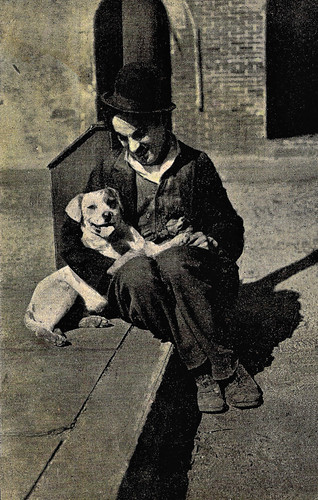
Charlie Chaplin. Spanish postcard by Chocolate Amatller, serie 9, no. 11. Photo: publicity still for A Dog's Life (Charles Chaplin, 1918).

Constance Talmadge. French postcard by A.N., Paris in the Les Vedettes de Cinéma series, no. 12. Photo: B. Frank Puffer / First National Location.
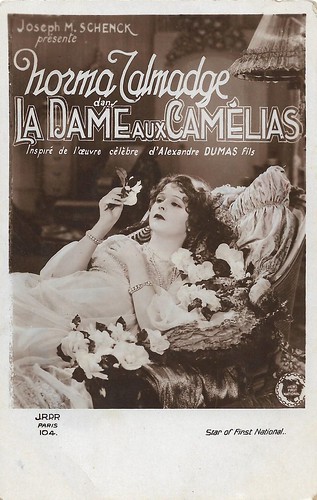
Norma Talmadge. French postcard by J.R.D.R., Paris, no. 104. Photo: First National. Publicity still for Camille (Fred Niblo, 1926), produced by Joseph Schenck, the later producer of United Artists, and based on the famous novel by Alexandre Dumas fils.

Nazimova and Milton Sills. Danish postcard by Stenders Kunstforlag, no. 39. Photo: First National Pictures. Publicity still for Madonna of the Streets (Edwin Carewe, 1924).

Richard Barthelmess. German postcard by Ross Verlag, no. 704/1, 1925-1926. Photo: James Abbe / Transocean-Film-Co., Berlin.
Adolph Zukor of Paramount Pictures was threatened by First National's financial power and its control over the lucrative first-run theatres, and decided to enter the cinema business as well. With a $10 million investment, Paramount built its own chain of first-run movie theatres after a secret plan to merge with First National failed.
First National Exhibitors' Circuit was reincorporated in 1919 as Associated First National Pictures, Inc., and its subsidiary, Associated First National Theatres, Inc., with 5,000 independent theatre owners as members. First National had new successes with Constance Talmadge in the comedy A Virtuous Vamp (David Kirkland, Sidney Franklin, 1919). It was produced by Talmadge and written by Anita Loos and John Emerson based on the 1909 play The Bachelor by Clyde Fitch. Anita Loos also wrote Two Weeks (Sidney Franklin, 1920), starring Constance Talmadge and Conway Tearle.
Sister Norma Talmadge starred in such dramas as A Daughter of Two Worlds (James Young, 1920), The Branded Woman (Albert Parker, 1920). The latter was also produced by Talmadge with her husband Joseph Schenck through their production company, Norma Talmadge Productions. Later followed such hits as Camille (Fred Niblo, 1926).
Director King Vidor also worked for First National, such as on the drama The Family Honor (King Vidor, 1920) with Florence Vidor. A major box office success was Tol'able David (Henry King, 1921) starring Richard Barthelmess. It was a rustic tale of violence set in the Allegheny Mountains of eastern West Virginia. The acclaimed film was voted the 1921 Photoplay Magazine Medal of Honor and is seen by now as one of the classics of silent film.
Associated First National Pictures expanded from only distributing films to producing them in 1924 and changed its corporate name to First National Pictures, Inc. It built its 62-acre (25 ha) studio lot in Burbank in 1926. The Motion Picture Theatre Owners of America and the Independent Producers' Association declared war in 1925 on what they termed a common enemy — the ‘film trust’ of Metro-Goldwyn-Mayer, Paramount, and First National, which they claimed dominated the industry not only by producing and distributing films but also by entering into exhibition as well.
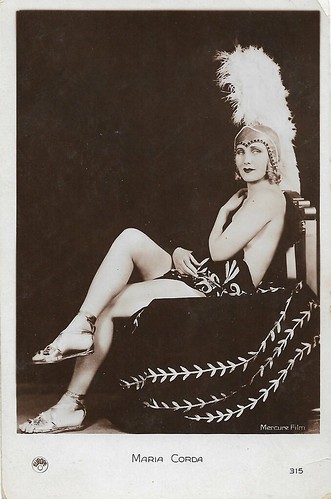
French postcard by Europe, no. 315. Photo: Mercure Film. Maria Corda as Helen of Troy in The Private Life of Helen of Troy (Alexander Korda, 1927).
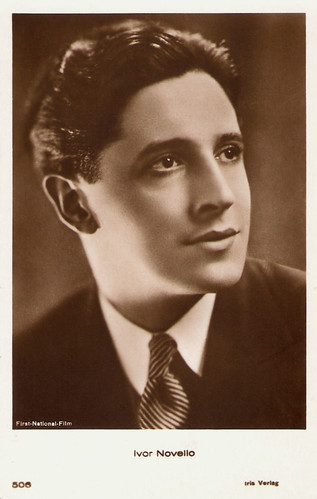
Ivor Novello. Austrian postcard by Iris Verlag, nr. 506. Photo: First National Film.
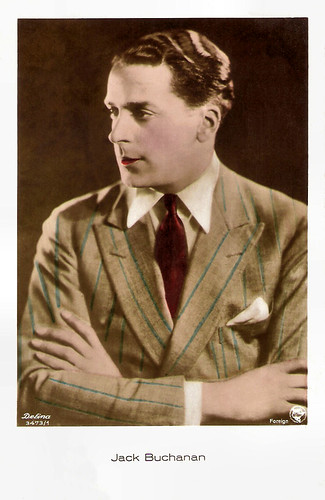
Jack Buchanan. British postcard in the real hand-coloured photograph series, no. 136. Photo: Defina / First National.
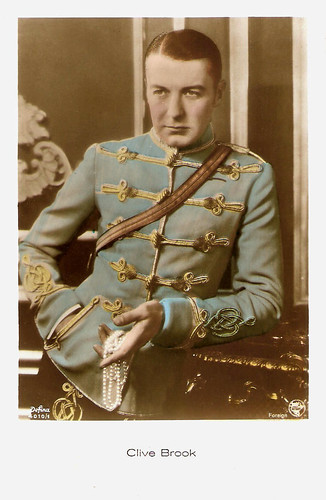
Clive Brook. British postcard, no. 4010/1. Photo: Defina / First National Pictures. Publicity still for Yellow Lily (Alexander Korda, 1928).
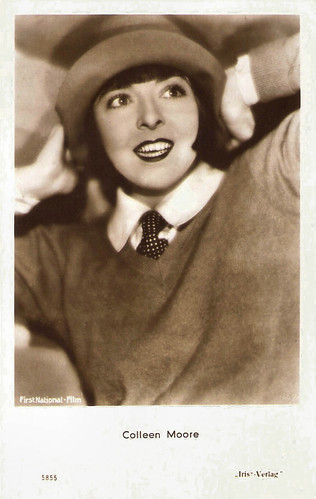
Colleen Moore. Austrian postcard by Iris-Verlag, no. 5855. Photo: First National-Film.
Madge Bellamy became a star with Lorna Doone (Maurice Tourneur, 1922) a film version of Richard Doddridge Blackmore's often filmed novel. Another success was Oliver Twist (Frank Lloyd, 1922), a silent film adaptation of Charles Dickens' classic novel, featuring Lon Chaney as Fagin and Jackie Coogan at the height of his success as Oliver.
One of the major directors at First National was John M. Stahl who made such dramas The Dangerous Age (John M. Stahl, 1923) starring Lewis Stone. Another interesting director was Frank Borzage who directed the drama The Age of Desire (Frank Borzage, 1923) starring Josef Swickard, William Collier Jr., and Mary Philbin.
A popular success was Potash and Perlmutter (Clarence G. Badger, 1923), based on an ethnic Jewish comedy with characters created by Montague Glass and Charles Klein. This film was the first production of Samuel Goldwyn's independent production company. Stage stars Alexander Carr and Barney Bernard reprise their famous roles in this film. The film's success would inspire two Goldwyn sequels, In Hollywood with Potash and Perlmutter (Alfred E. Green, 1924) and Partners Again (Henry King, 1926), but the latter was distributed by United Artists.
Associated First National both distributed and produced the drama Flaming Youth (John Francis Dillon, 1923) starring vivid Colleen Moore and Milton Sills. The reaction to the film was enthusiastic, and it firmly fixed in the public's imagination a new kind of female behaviour. There had been several films prior to Flaming Youth which used the flapper as subject matter, such as The Flapper (Alan Crosland, 1920) with Olive Thomas, but the financial success of Flaming Youth made it the film credited with launching a cycle of pictures about flappers and helping Colleen Moore be seen as the original film flapper.
Blanche Sweet was the star of the silent film version of Anna Christie (John Griffith Wray, 1923) based on the 1921 play by Eugene O'Neill. Producer Thomas H. Ince paid a then-astronomical $35,000 for the screen rights to the play. Another success was the fantasy monster adventure film The Lost World (Harry O. Hoyt, 1925) adapted from Arthur Conan Doyle's 1912 novel of the same name. The film stars Wallace Beery as Professor Challenger and featured pioneering stop motion special effects by Willis O'Brien, a forerunner of his work on the original King Kong (1933).

German postcard by Ross Verlag, no. 3216/1, 1928-1929. Photo: Defina / First national. Publicity still for The Private Life of Helen of Troy (Alexander Korda, 1927), in which Ricardo Cortez co-starred as Paris opposite Maria Corda as Helen of Troy.
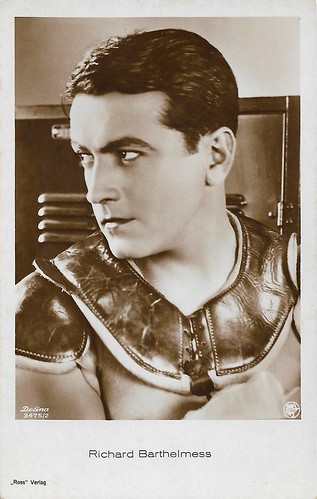
Richard Barthelmess. German postcard by Ross Verlag, no. 3475/2, 1928-1929. Photo: Defina / First National. Publicity still for The Drop-Kick (Millard Webb, 1927).
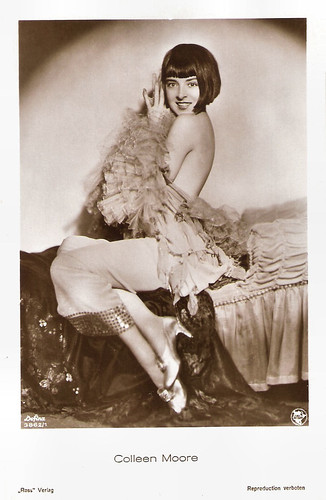
Colleen Moore. German postcard by Ross Verlag, no. 3862/1, 1928-1929. Photo: Defina / First-National-Film.

Ken Maynard. German postcard by Ross Verlag, no. 4561/1, 1929-1930. Photo: Defina / First National Pictures.
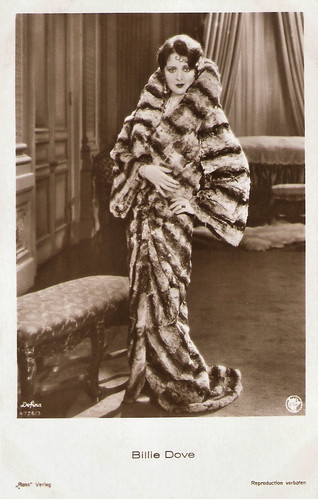
Billie Dove. German postcard by Ross Verlag, no. 4726/3, 1929-1930. Photo: Defina / First National.
The financial success of The Jazz Singer (Alan Crosland, 1927) and The Singing Fool (Lloyd Bacon, 1928), both with Al Jolson, enabled Warner Bros. to purchase a majority interest in First National in September 1928. Warner Bros. held 42,000 shares of common stock out of 72,000 outstanding shares while Fox Pictures held 21,000 shares; 12,000 shares were publicly held.
Warner Bros. acquired access to First National's affiliated chain of theatres, while First National acquired access to Vitaphone sound equipment. Warner Bros. and First National continued to operate as separate entities. On November 4, 1929, Fox sold its interest in First National to Warner Bros. for $10 million.
The First National studio in Burbank became the official home of Warner Bros.–First National Pictures. Thereafter, First National Pictures became a trade name for the distribution of a designated segment of Warner Bros. product. Forty-five of the 86 Warner Bros. feature films released in 1929 were branded as First National Pictures. Half of the 60 feature films Warner Bros. announced for release in 1933–1934 were to be First National Pictures.
Although both studios produced A and B budget pictures, generally the prestige productions, costume dramas, and musicals were made by Warner Bros., while First National specialised in modern comedies, dramas, and crime stories. Short subjects were made by yet another affiliated company, The Vitaphone Corporation, which took its name from the sound process.
In July 1936, stockholders of First National Pictures, Inc. (primarily Warner Bros.) voted to dissolve the corporation and distribute its assets among the stockholders in line with a new tax law which provided for tax-free consolidations between corporations. From 1929 to 1958, most Warner Bros. films and promotional posters bore the combined trademark and copyright credits in the opening and closing sequences ‘A Warner Bros.–First National Picture’.
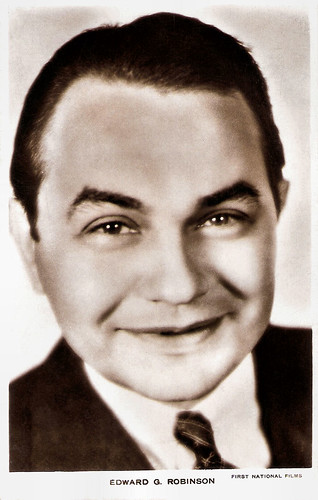
Edward G. Robinson. British postcard. Photo: First National Films.

Joan Blondell. British postcard. Photo: First National Films.

Bebe Daniels. German postcard by Ross Verlag, no. 6498/1, 1931-1932. Photo: First National Pictures. Publicity still for Honor of the Family (Lloyd Bacon, 1931).
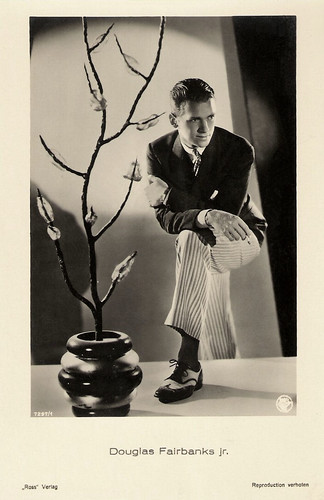
Douglas Fairbanks Jr. German postcard by Ross Verlag, no. 7297/1, 1932-1933. Photo: First National Pictures.
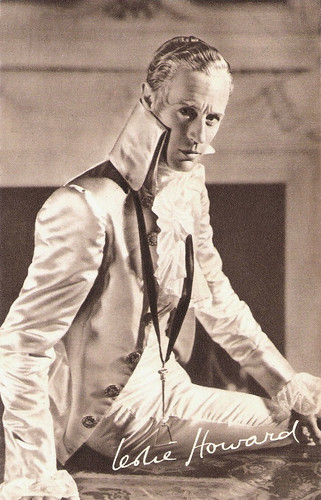
Leslie Howard. British postcard by Real Photogravure, London, no. 64. Photo: Warner Brothers / First National. Publicity still for The Scarlet Pimpernel (Harold Young, 1934).
Sources: Encyclopaedia Britannica, Oscars.org, and Wikipedia.

American postcard by Western Air Express, no. 888. Caption: 'Where Motion Pictures Are Made' An overview of the First National Pictures studio complex in the mid-/late 1920s.

Charlie Chaplin. British postcard by Rotary Photo, no. 11575B. Photo: Albert Witzel.

Mary Pickford. French postcard by Europe, no. 160.

Jackie Coogan. German postcard by Ross Verlag, no. 701/2, 1925-1926. Photo: Transocean-Film-Company, Berlin.

Colleen Moore. German postcard by Ross Verlag, no. 3469/2, 1928-1929. Photo: DeFina / First National Pictures.
Against high cost rentals, block-booking, and inferior prints
The First National Exhibitors' Circuit was founded in 1917 by the merger of 26 of the biggest first-run cinema chains in the United States. It eventually controlled over 600 cinemas, more than 200 of them first-run houses as opposed to the less lucrative second-run or neighbourhood theatres to which films moved when their initial box office receipts dwindled.
First National was the brainchild of Thomas L. Tally, who was reacting to the many problems exhibitors had experienced with established distributors, such as the high cost of rentals, block-booking, and the inferior quality of some prints. The exhibitors also wanted to bypass distributors such as Adolph Zukor's Paramount, which had begun to try to control all aspects of the film industry.
In 1912, Tally thought that a conglomerate of theatres throughout the nation could buy or produce and distribute its own films. In 1917 Tally and J. D. Williams formed First National Exhibitors' Circuit. The first film released through First National was the British film, The Mother of Dartmoor (George Loane Tucker, 1916).
A success was Tarzan of the Apes (Scott Sidney, 1918) starring Elmo Lincoln as the first screen Tarzan and based on Edgar Rice Burroughs' original novel Tarzan of the Apes. The film adapts only the first part of the novel, the remainder becoming the basis for the sequel, The Romance of Tarzan (Wilfred Lucas, 1918) starring Elmo Lincoln and Enid Markey.
Between 1917 and 1918, the company made contracts with Mary Pickford and Charlie Chaplin, the first million-dollar deals in the history of film. Daddy-Long-Legs (Marshall Neilan, 1919) was produced by Mary Pickford, and based on Jean Webster's novel Daddy-Long-Legs. A Dog's Life (Charles Chaplin, 1918) was Chaplin's first film for First National Films. Chaplin's contract allowed him to produce his films without a set release schedule.
However, the production of the feature film The Kid (Charles Chaplin, 1921) ran so long that the company started to complain. To address their concerns Chaplin invited the exhibitors to the studio, and they were so impressed by the project and charmed by the players, especially co-star Jackie Coogan, that they agreed to be patient. That patience was ultimately rewarded when The Kid became a major critical and box office success.
First National's distribution of films by independent producers is credited with launching careers including that of Louis B. Mayer. Mayer produced the Western In Old Kentucky (Marshall Neilan, 1919) starring Anita Stewart. Neilan and Mayer worked often together, but after Mayer became head of MGM in 1924, the two had a falling out.

Charlie Chaplin. Spanish postcard by Chocolate Amatller, serie 9, no. 11. Photo: publicity still for A Dog's Life (Charles Chaplin, 1918).

Constance Talmadge. French postcard by A.N., Paris in the Les Vedettes de Cinéma series, no. 12. Photo: B. Frank Puffer / First National Location.

Norma Talmadge. French postcard by J.R.D.R., Paris, no. 104. Photo: First National. Publicity still for Camille (Fred Niblo, 1926), produced by Joseph Schenck, the later producer of United Artists, and based on the famous novel by Alexandre Dumas fils.

Nazimova and Milton Sills. Danish postcard by Stenders Kunstforlag, no. 39. Photo: First National Pictures. Publicity still for Madonna of the Streets (Edwin Carewe, 1924).

Richard Barthelmess. German postcard by Ross Verlag, no. 704/1, 1925-1926. Photo: James Abbe / Transocean-Film-Co., Berlin.
A rustic tale of violence set in the mountains of West Virginia
Adolph Zukor of Paramount Pictures was threatened by First National's financial power and its control over the lucrative first-run theatres, and decided to enter the cinema business as well. With a $10 million investment, Paramount built its own chain of first-run movie theatres after a secret plan to merge with First National failed.
First National Exhibitors' Circuit was reincorporated in 1919 as Associated First National Pictures, Inc., and its subsidiary, Associated First National Theatres, Inc., with 5,000 independent theatre owners as members. First National had new successes with Constance Talmadge in the comedy A Virtuous Vamp (David Kirkland, Sidney Franklin, 1919). It was produced by Talmadge and written by Anita Loos and John Emerson based on the 1909 play The Bachelor by Clyde Fitch. Anita Loos also wrote Two Weeks (Sidney Franklin, 1920), starring Constance Talmadge and Conway Tearle.
Sister Norma Talmadge starred in such dramas as A Daughter of Two Worlds (James Young, 1920), The Branded Woman (Albert Parker, 1920). The latter was also produced by Talmadge with her husband Joseph Schenck through their production company, Norma Talmadge Productions. Later followed such hits as Camille (Fred Niblo, 1926).
Director King Vidor also worked for First National, such as on the drama The Family Honor (King Vidor, 1920) with Florence Vidor. A major box office success was Tol'able David (Henry King, 1921) starring Richard Barthelmess. It was a rustic tale of violence set in the Allegheny Mountains of eastern West Virginia. The acclaimed film was voted the 1921 Photoplay Magazine Medal of Honor and is seen by now as one of the classics of silent film.
Associated First National Pictures expanded from only distributing films to producing them in 1924 and changed its corporate name to First National Pictures, Inc. It built its 62-acre (25 ha) studio lot in Burbank in 1926. The Motion Picture Theatre Owners of America and the Independent Producers' Association declared war in 1925 on what they termed a common enemy — the ‘film trust’ of Metro-Goldwyn-Mayer, Paramount, and First National, which they claimed dominated the industry not only by producing and distributing films but also by entering into exhibition as well.

French postcard by Europe, no. 315. Photo: Mercure Film. Maria Corda as Helen of Troy in The Private Life of Helen of Troy (Alexander Korda, 1927).

Ivor Novello. Austrian postcard by Iris Verlag, nr. 506. Photo: First National Film.

Jack Buchanan. British postcard in the real hand-coloured photograph series, no. 136. Photo: Defina / First National.

Clive Brook. British postcard, no. 4010/1. Photo: Defina / First National Pictures. Publicity still for Yellow Lily (Alexander Korda, 1928).

Colleen Moore. Austrian postcard by Iris-Verlag, no. 5855. Photo: First National-Film.
The Flapper - a new kind of female behaviour
Madge Bellamy became a star with Lorna Doone (Maurice Tourneur, 1922) a film version of Richard Doddridge Blackmore's often filmed novel. Another success was Oliver Twist (Frank Lloyd, 1922), a silent film adaptation of Charles Dickens' classic novel, featuring Lon Chaney as Fagin and Jackie Coogan at the height of his success as Oliver.
One of the major directors at First National was John M. Stahl who made such dramas The Dangerous Age (John M. Stahl, 1923) starring Lewis Stone. Another interesting director was Frank Borzage who directed the drama The Age of Desire (Frank Borzage, 1923) starring Josef Swickard, William Collier Jr., and Mary Philbin.
A popular success was Potash and Perlmutter (Clarence G. Badger, 1923), based on an ethnic Jewish comedy with characters created by Montague Glass and Charles Klein. This film was the first production of Samuel Goldwyn's independent production company. Stage stars Alexander Carr and Barney Bernard reprise their famous roles in this film. The film's success would inspire two Goldwyn sequels, In Hollywood with Potash and Perlmutter (Alfred E. Green, 1924) and Partners Again (Henry King, 1926), but the latter was distributed by United Artists.
Associated First National both distributed and produced the drama Flaming Youth (John Francis Dillon, 1923) starring vivid Colleen Moore and Milton Sills. The reaction to the film was enthusiastic, and it firmly fixed in the public's imagination a new kind of female behaviour. There had been several films prior to Flaming Youth which used the flapper as subject matter, such as The Flapper (Alan Crosland, 1920) with Olive Thomas, but the financial success of Flaming Youth made it the film credited with launching a cycle of pictures about flappers and helping Colleen Moore be seen as the original film flapper.
Blanche Sweet was the star of the silent film version of Anna Christie (John Griffith Wray, 1923) based on the 1921 play by Eugene O'Neill. Producer Thomas H. Ince paid a then-astronomical $35,000 for the screen rights to the play. Another success was the fantasy monster adventure film The Lost World (Harry O. Hoyt, 1925) adapted from Arthur Conan Doyle's 1912 novel of the same name. The film stars Wallace Beery as Professor Challenger and featured pioneering stop motion special effects by Willis O'Brien, a forerunner of his work on the original King Kong (1933).

German postcard by Ross Verlag, no. 3216/1, 1928-1929. Photo: Defina / First national. Publicity still for The Private Life of Helen of Troy (Alexander Korda, 1927), in which Ricardo Cortez co-starred as Paris opposite Maria Corda as Helen of Troy.

Richard Barthelmess. German postcard by Ross Verlag, no. 3475/2, 1928-1929. Photo: Defina / First National. Publicity still for The Drop-Kick (Millard Webb, 1927).

Colleen Moore. German postcard by Ross Verlag, no. 3862/1, 1928-1929. Photo: Defina / First-National-Film.

Ken Maynard. German postcard by Ross Verlag, no. 4561/1, 1929-1930. Photo: Defina / First National Pictures.

Billie Dove. German postcard by Ross Verlag, no. 4726/3, 1929-1930. Photo: Defina / First National.
The First National studio as the official home of Warner Bros
The financial success of The Jazz Singer (Alan Crosland, 1927) and The Singing Fool (Lloyd Bacon, 1928), both with Al Jolson, enabled Warner Bros. to purchase a majority interest in First National in September 1928. Warner Bros. held 42,000 shares of common stock out of 72,000 outstanding shares while Fox Pictures held 21,000 shares; 12,000 shares were publicly held.
Warner Bros. acquired access to First National's affiliated chain of theatres, while First National acquired access to Vitaphone sound equipment. Warner Bros. and First National continued to operate as separate entities. On November 4, 1929, Fox sold its interest in First National to Warner Bros. for $10 million.
The First National studio in Burbank became the official home of Warner Bros.–First National Pictures. Thereafter, First National Pictures became a trade name for the distribution of a designated segment of Warner Bros. product. Forty-five of the 86 Warner Bros. feature films released in 1929 were branded as First National Pictures. Half of the 60 feature films Warner Bros. announced for release in 1933–1934 were to be First National Pictures.
Although both studios produced A and B budget pictures, generally the prestige productions, costume dramas, and musicals were made by Warner Bros., while First National specialised in modern comedies, dramas, and crime stories. Short subjects were made by yet another affiliated company, The Vitaphone Corporation, which took its name from the sound process.
In July 1936, stockholders of First National Pictures, Inc. (primarily Warner Bros.) voted to dissolve the corporation and distribute its assets among the stockholders in line with a new tax law which provided for tax-free consolidations between corporations. From 1929 to 1958, most Warner Bros. films and promotional posters bore the combined trademark and copyright credits in the opening and closing sequences ‘A Warner Bros.–First National Picture’.

Edward G. Robinson. British postcard. Photo: First National Films.

Joan Blondell. British postcard. Photo: First National Films.

Bebe Daniels. German postcard by Ross Verlag, no. 6498/1, 1931-1932. Photo: First National Pictures. Publicity still for Honor of the Family (Lloyd Bacon, 1931).

Douglas Fairbanks Jr. German postcard by Ross Verlag, no. 7297/1, 1932-1933. Photo: First National Pictures.

Leslie Howard. British postcard by Real Photogravure, London, no. 64. Photo: Warner Brothers / First National. Publicity still for The Scarlet Pimpernel (Harold Young, 1934).
Sources: Encyclopaedia Britannica, Oscars.org, and Wikipedia.
No comments:
Post a Comment